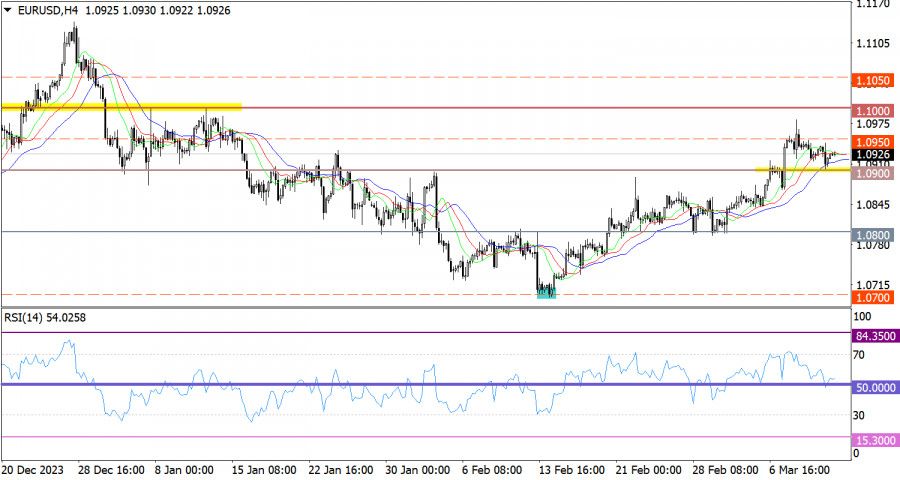
The dollar strengthened after the U.S. Consumer Price Index inflation data showed inflation had accelerated from 3.1% to 3.2%. It seemed that the movement would be quite substantial. After all persistent inflationary pressures rule out the possibility of the Federal Reserve lowering interest rates, at least until autumn. It seems that the Fed is struggling to control inflation, and in such a situation, softening monetary policy could lead to an even greater surge in prices. So, there was no doubt that the U.S. dollar would strengthen further. However, this process quickly came to a halt and was eventually replaced by a reversal.
Interestingly enough, it all comes down to political factors. Leading U.S. media outlets have been depicting Donald Trump as a kind of reincarnation of the Antichrist for quite some time. They claim that he threatens democracy and the like. The key is that the former President of the United States lacks support from major institutional investors who exert the most influence on global financial markets. However, Trump won the final victory in the Republican primaries and became the official candidate for the upcoming presidential elections. His potential return to the White House greatly upset major investors, which was reflected in the dollar's weakness.
Nevertheless, this is more of an emotional reaction. Especially since there is no guarantee that Trump will be able to win. Moreover, the economic situation in the United States is much better than in Europe. This should be shown by today's Eurozone industrial production data. Market players expect the 1.2% growth to be replaced by a decline of as much as 3.0%. Such a sharp change, especially in the negative direction, will undermine the euro's positions and allow the dollar to significantly strengthen its position.

The EUR/USD pair, during the pullback, reached the level of 1.0900, and we noticed that the volume of short positions decreased around this mark.
On the 4-hour chart, the RSI has left the overbought zone and has crossed line 50.
Meanwhile, the Alligator's MAs are pointing upward in the 4-hour chart. However, due to the current price pullback, two out of three moving averages are intertwined, indicating a slowdown in the upward cycle.
OutlookIn order for sellers to strengthen their short positions on the euro, the price needs to settle below the 1.0900 level during the day, which can extend the pullback phase. Otherwise, the area around the 1.0900 level will act as support, potentially leading to the end of the pullback phase and the upward cycle will resume.
In terms of complex indicator analysis, a price rebound from the 1.0900 level is likely in the short term. Meanwhile, indicators also signal a downtrend in the intraday.